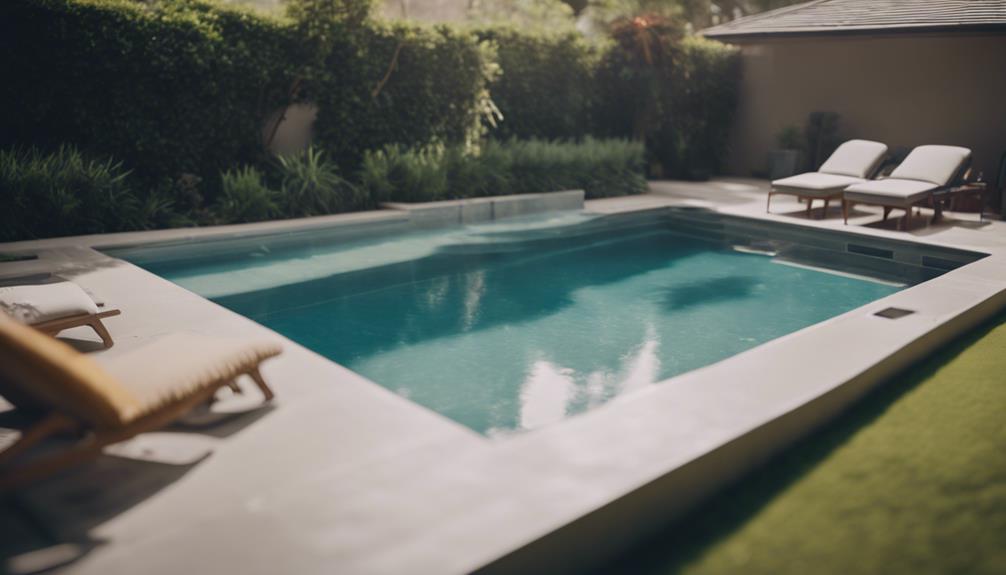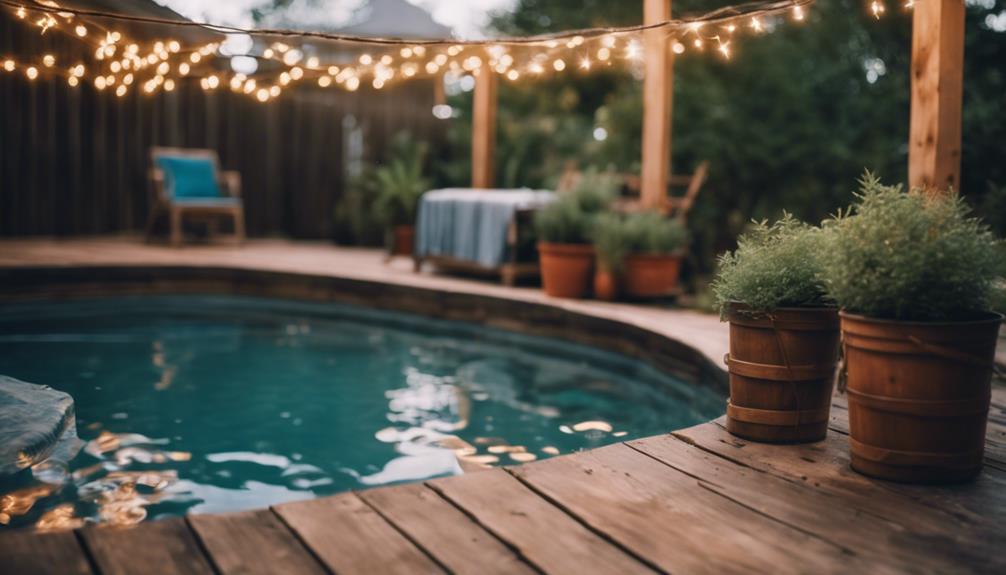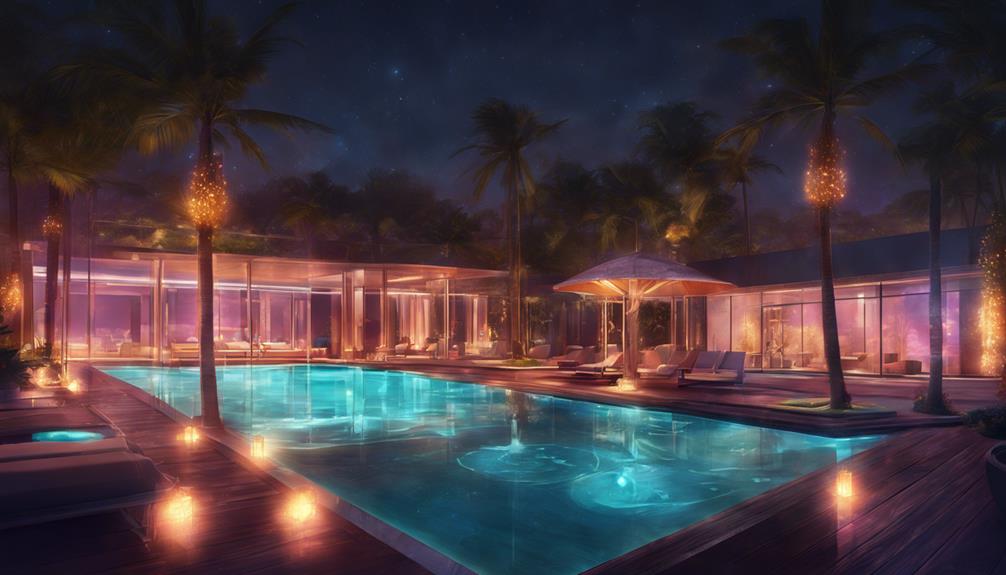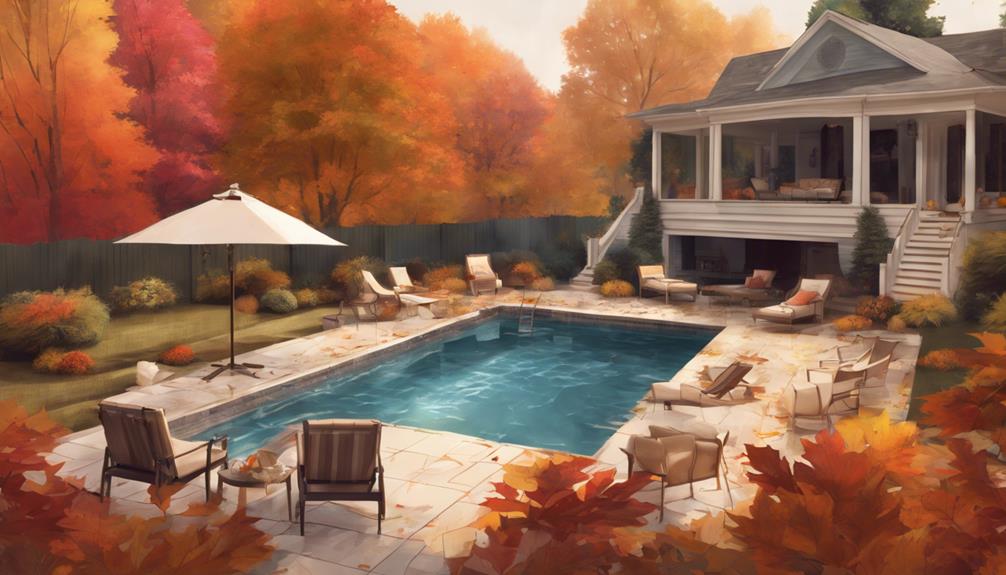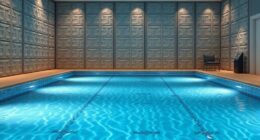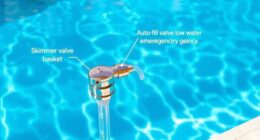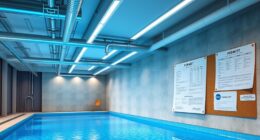When choosing the size of a swimming pool, consider different options. Inground pools vary from 10×20 to 20×40 feet. Above-ground pools range from 10 to 24 feet, easier to install compared to inground ones. Olympic pools are 154×82 feet, designed for competitions. Lap pools are narrow, perfect for continuous swimming. Plunge pools are great for small spaces for quick dips. Endless pools offer continuous swimming right at home. Freeform pools come in different shapes and sizes. For smaller areas, pools measuring 10×20 to 14×28 feet are ideal. To determine the best size, consider the users, space, and activities involved. For further information on pool sizes, click here.
Key Takeaways
- Inground pools commonly range from 10×20 to 20×40 feet with varying depths.
- Above-ground pools typically range from 10 to 24 feet in diameter.
- Olympic pools are standardized at 154×82 feet with a depth of 6 feet.
- Lap pools vary from 6×30 to 10×50 feet, designed for continuous swimming.
- Consider factors like yard size and primary use when choosing the right pool size.
Inground Pool Dimensions
When planning your inground pool, take into account the common dimensions ranging from 10×20 to 20×40 feet to match your yard size and preferences. The size of your pool can greatly impact your swimming experience and overall enjoyment.
A key aspect to think about is the depth variation between the deep end and the shallow end. The deep end is typically around 8 to 9 feet deep, providing ample space for diving and more advanced swimming activities.
On the other hand, the shallow end usually ranges from 3 to 5 feet deep, making it ideal for children, water games, and relaxation.
The size of your pool also determines how many people can comfortably swim and enjoy the space. Backyard dimensions play an important role in selecting the right pool size to ensure there's enough room for the pool, deck area, and any additional features you may want to include.
Above-Ground Pool Dimensions
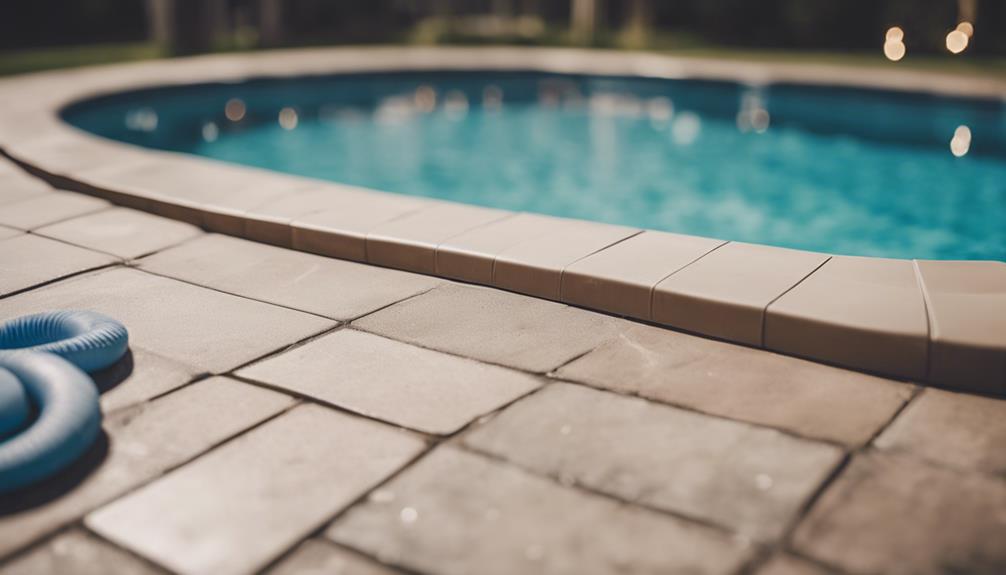
Standard above-ground pools come in various sizes, ranging from 10 feet to 24 feet in diameter. These above-ground pool dimensions determine the pool's capacity and space requirements.
A smaller pool, like a 10-foot one, is ideal for limited backyard spaces or for those seeking a more budget-friendly option. On the other hand, a 24-foot pool offers more room for multiple users and activities.
The standard sizes available in the market include 10 feet, 14 feet, 16 feet, 18 feet, 20 feet, and 24 feet in diameter. Above-ground pools are generally shallower than inground pools, with depths typically ranging from 48 inches to 52 inches.
Due to their above-ground design, these pools are easier to install and maintain, making them a popular choice for many homeowners. Their compact footprint and lower installation costs make them a practical and versatile choice for those looking to enjoy the benefits of a pool without the commitment of an inground option.
Olympic Pool Dimensions
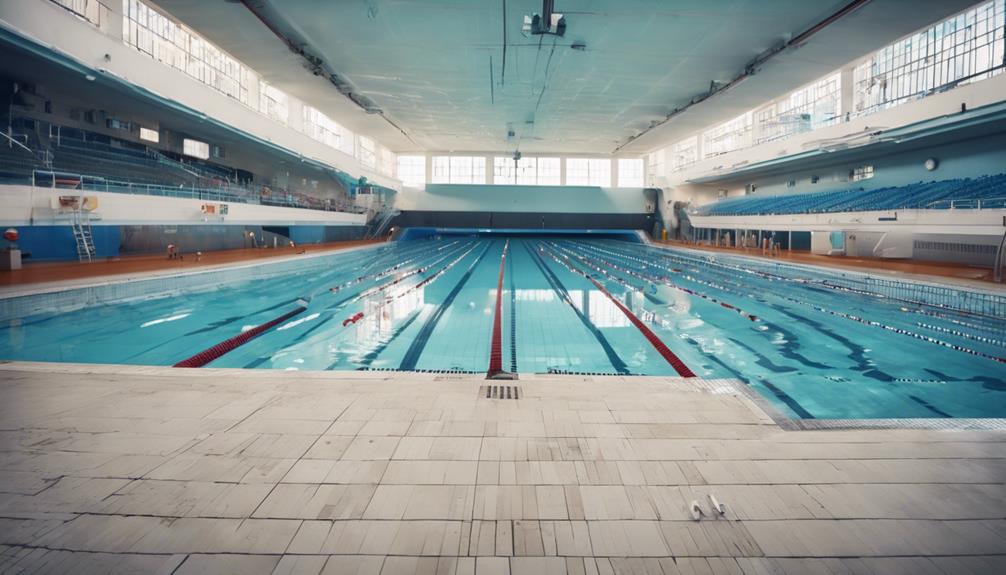
Olympic pools boast standard dimensions of 154 feet in length and 82 feet in width, making them essential for competitive swimming events. These pools, typically 6 feet deep, play a vital role in maintaining fairness in competitions. Regulated by strict guidelines, Olympic pools require precise construction to meet international standards, ensuring consistency across different venues. The size and layout of Olympic pools are meticulously planned to enhance swimmers' performance and safety during races.
Competitive swimming relies heavily on the dimensions of Olympic pools to create a level playing field for athletes. The length and width of these pools directly impact swimmers' strategies, turn techniques, and overall race performance. Additionally, the depth of the pool contributes to the safety of the participants, allowing for proper diving and underwater turns without compromising on comfort or risk.
Essentially, Olympic pool dimensions are carefully calibrated to optimize the competitive swimming experience for athletes worldwide.
Lap Pool Dimensions
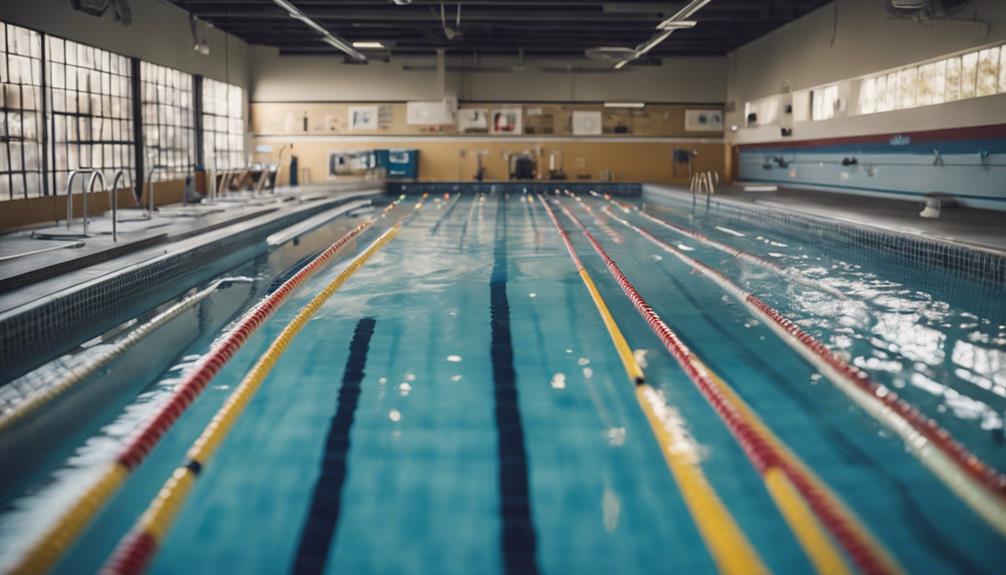
To shift focus from competitive swimming to fitness-oriented aquatic activities, lap pool dimensions vary to cater to individual fitness needs and space constraints. Common lap pool sizes typically range from 6×30 to 10×50 feet, with lengths of 35-40 feet being ideal for fitness enthusiasts looking to swim laps for exercise.
These pools are designed to be narrow, allowing for continuous swimming without the need for turns. Lap pools are customized to fit into narrow or small yard spaces, making them a convenient option for those with limited area availability.
The primary purpose of lap pools is to provide a dedicated space for swimming as a form of exercise and fitness training. When considering a lap pool for your home, take into account your fitness goals and available space to make sure that the pool size and dimensions align with your needs.
Plunge Pool Dimensions
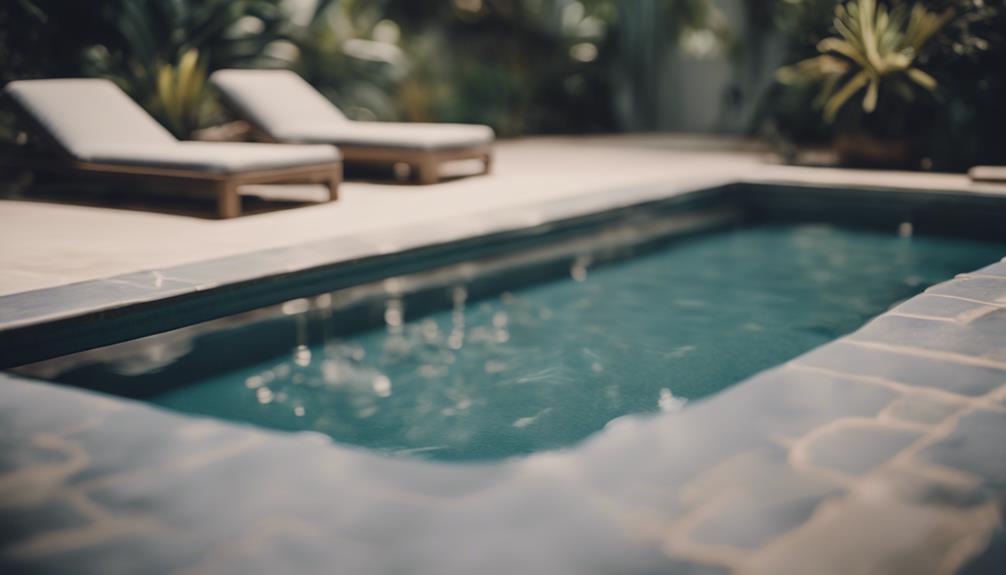
When considering plunge pool dimensions, various sizes like 6×10, 6×12, and 8×20 feet are common options to accommodate different space requirements and relaxation preferences.
Small plunge pools, such as 6×10 feet, are perfect for compact spaces, offering a cozy spot to cool off and unwind.
On the other hand, larger plunge pools like 8×20 feet provide more room for enjoyment and relaxation, making them ideal for those who want a bit more space to splash around.
Common dimensions for plunge pools also include 6×15 and 8×12 feet, offering a balance between size and functionality. These sizes cater to a range of needs, from fitting into tight outdoor areas to providing a bit more space for leisure activities.
Overall, plunge pools are designed for quick dips and cooling off, making them a popular choice for smaller yards where a full-sized pool mightn't be practical.
Whether you opt for a compact plunge pool or a slightly larger one, these common dimensions ensure there's a size that fits your preferences and space constraints.
Endless Pool Dimensions
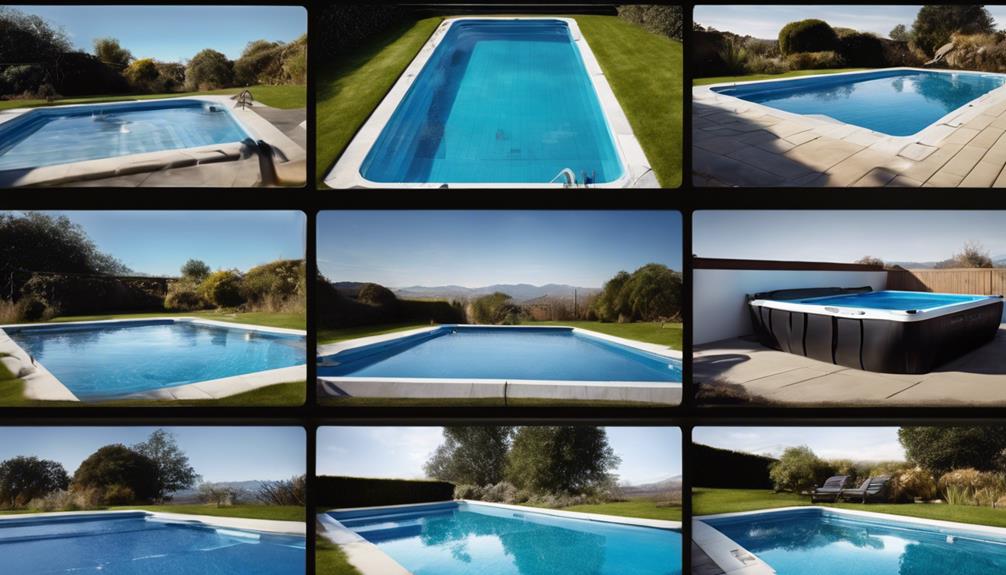
Commonly available in dimensions of 9×15 feet or 15×20 feet, endless pools are designed for continuous swimming or aquatic therapy.
The 9×15 feet size is ideal for smaller spaces or personal use, offering a compact yet effective swimming experience.
On the other hand, the 15×20 feet option provides more room for swimming laps and engaging in aquatic exercises.
Endless pools are tailored to provide a convenient and efficient way to swim at home, allowing you to enjoy the benefits of swimming without the need for a large traditional pool.
Whether you're looking to improve your swimming technique, engage in low-impact aquatic workouts, or simply relax in the water, these pool sizes cater to a variety of needs.
Consider the available space you have and your intended use when deciding between the 9×15 feet and 15×20 feet endless pool sizes for your swimming pool design.
Freeform Pool Dimensions
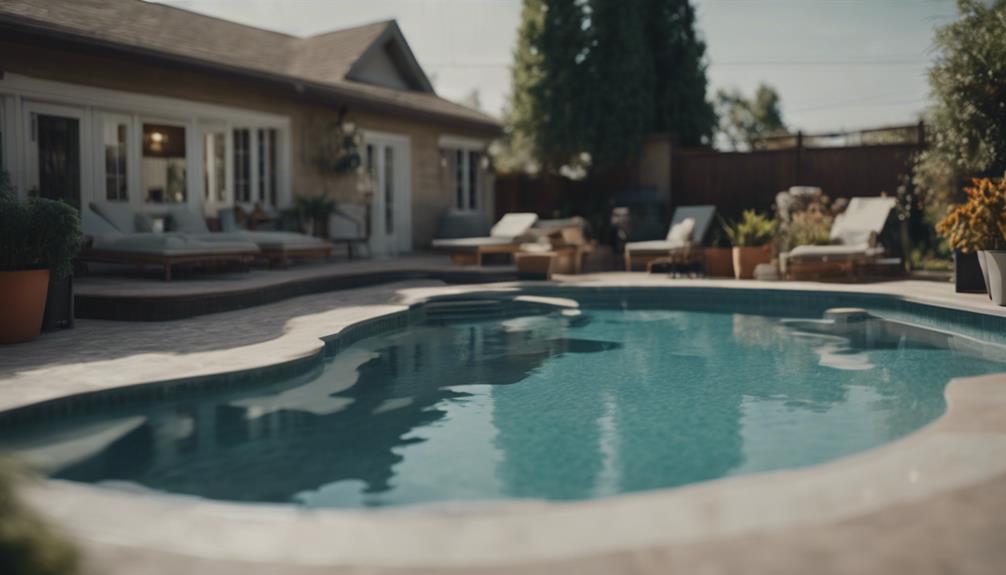
Freeform pool dimensions offer a range of unique shapes and sizes, providing you with design flexibility options to enhance your backyard oasis.
These pools can be customized to fit your specific preferences and space constraints, allowing for creative landscaping and water features.
When choosing a freeform pool size, consider the available space and the aesthetic appeal you wish to achieve in your outdoor living space.
Unique Shapes and Sizes
Explore the diverse range of dimensions available for freeform pools, offering unique shapes and sizes to suit various backyard layouts and preferences.
Freeform pools break away from the traditional rectangular or oval designs, allowing for a more customized and visually striking option. These pools can range from smaller sizes like 10×20 feet to larger dimensions such as 20×40 feet, providing flexibility in backyard customization.
The unique shapes of freeform pools, which can resemble natural bodies of water like lagoons or ponds, add a personalized touch to your swimming experience. Their curved edges and irregular outlines create a visually appealing aesthetic, blending seamlessly with landscaping elements for a more natural look.
Homeowners often choose freeform pools for their flexibility in design and the ability to create a one-of-a-kind pool that complements their outdoor space.
Design Flexibility Options
With unique shapes and sizes, freeform pools offer a wide range of design flexibility options for creating a personalized swimming oasis in your backyard.
Freeform pools come in a variety of dimensions, typically ranging from 12×24 to 20×40 feet, allowing you to find the perfect pool size and shape to fit your space.
These smaller pools can easily adapt to different yard sizes and shapes, making them a versatile choice for homeowners looking to maximize their outdoor space.
The wide range of freeform pool designs available guarantees that you can customize your pool to suit your preferences and landscaping features.
When planning a freeform pool, consider factors like yard shape and space utilization to create a visually appealing and functional swimming area.
Check out the table below for a visual representation of the dimensions commonly seen in freeform pools:
Small Pool Dimensions
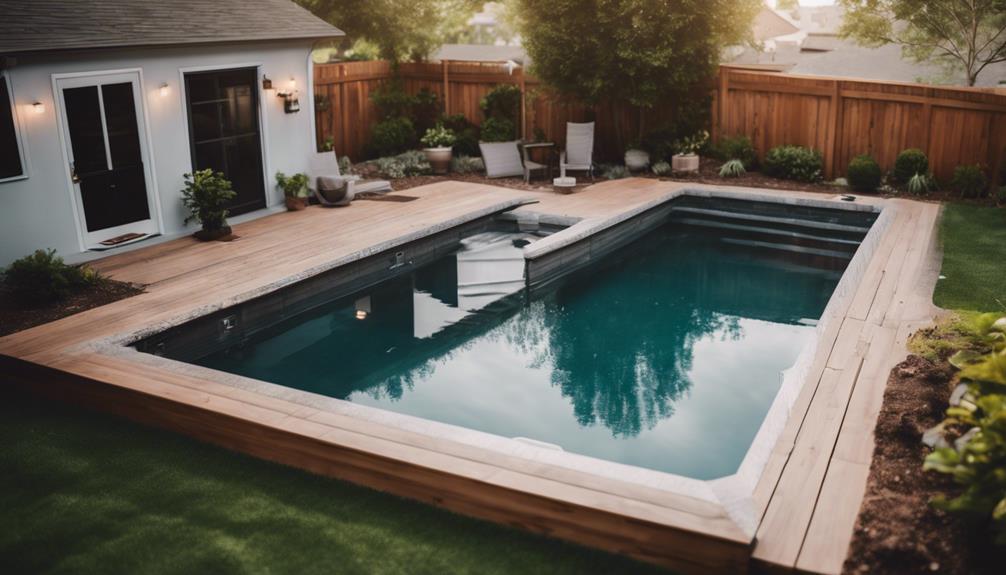
If you're working with limited space, small pool dimensions ranging from 10×20 feet to 14×28 feet offer compact pool designs that fit snugly in your backyard.
These smaller pools are an ideal small pool option, providing a rejuvenating retreat without overwhelming your outdoor area.
Consider space-saving pool designs like 12×24 feet or 14×28 feet for a relaxing oasis that caters to intimate gatherings or personal relaxation.
Compact Pool Designs
Compact pool designs cater to different needs and yard sizes, providing a revitalizing retreat in a limited space.
Compact pool designs, such as spool pools, are characterized by dimensions typically ranging from 20-22.5 feet in length and 10 feet in width. These smaller pool options offer a space-saving solution while still providing a rejuvenating oasis in your backyard.
Cocktail pools, slightly larger at around 24 feet long and 12 feet wide, allow for customization features like seating areas and built-in spas.
Play pools, also known as standard pools, offer more room for water activities with dimensions of about 28 feet in length and 14 feet in width.
Diving pools are designed with diving enthusiasts in mind, featuring a deep end of 8.5-10 feet, requiring medium to large yard space for safety.
Lap pools, perfect for fitness purposes, typically measure between 35-40 feet in length, with a narrow width ideal for narrow yards to accommodate lap swimming sessions.
Ideal Small Pool
For limited backyard spaces, consider the ideal small pool with dimensions ranging from 10×20 feet to 14×28 feet. Small pools in sizes like 12×24 feet or 16×32 feet are tailored to fit snugly in limited backyard areas. These compact pools are favored for their space-saving design and adaptability to cozy outdoor settings. Opting for a smaller pool dimension, such as 10×20 feet, offers an intimate and inviting swimming experience without compromising on functionality. These smaller pool sizes present a practical solution for individuals seeking to maximize their outdoor space efficiently. To better understand the ideal small pool sizes for compact spaces, refer to the table below:
| Pool Size (feet) | Best Suited For | Features |
|---|---|---|
| 10×20 | Cozy settings | Intimate experience |
| 12×24 | Limited backyards | Space-saving design |
| 14×28 | Compact spaces | Versatile option |
Space-Saving Pool Options
Consider exploring space-saving pool options with dimensions tailored for small areas, providing versatility and functionality in limited backyard spaces.
When looking to maximize your smaller backyard with the perfect size pool, here are some options to explore:
- Spool Pools: Measuring between 20-22.5 feet in length and 10 feet in width, spool pools are great for compact spaces or those on a budget.
- Cocktail Pools: With dimensions of 24 feet long and 12 feet wide, cocktail pools offer customization for entertainment and relaxation in limited areas.
- Play Pools: Play pools, sized at 28 feet long and 14 feet wide, provide various depths for activities like volleyball, making them popular for water sports and family fun.
These smaller pool options, whether you choose a spool, cocktail, or play pool, can transform your backyard into an invigorating oasis without compromising on space.
Each pool type offers unique features that cater to different needs while efficiently utilizing limited outdoor areas.
How to Choose the Right Pool Size
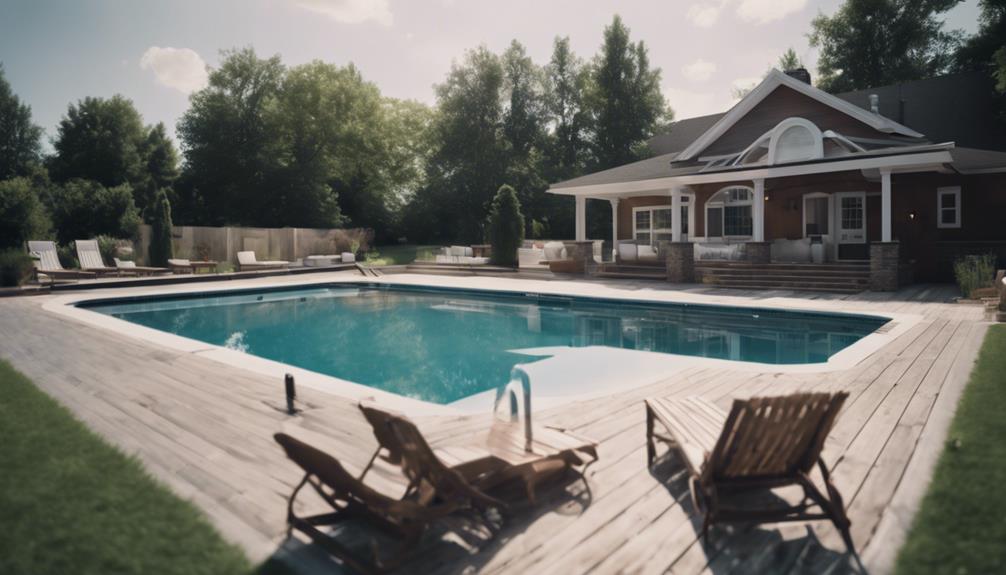
To select the appropriate pool size, assess the number of users, yard dimensions, and primary pool activities. Your pool size should align with your needs and space available in your yard.
Consider consulting a pool designer for expert advice on determining the best pool size based on your lifestyle and budget. The right pool size guarantees long-term satisfaction and enjoyment for both families and individuals.
Factors like yard size, budget, and primary pool use should guide your decision-making process. Inground pools can vary from 10×20 feet, while above-ground pools typically range around 24 feet, catering to different preferences and requirements.
Frequently Asked Questions
What Is the Most Popular Swimming Pool Size?
The most popular swimming pool size is typically a 16×32 foot inground pool. It offers a good balance of space and versatility for various activities. It's a common choice among homeowners for swimming, relaxing, and entertaining.
What Size Pool for a Family of 4?
You should consider a 16×32 feet pool size for a family of 4. It offers ample space for swimming and recreation, ensuring each family member can relax and have fun. This size strikes a balance between functionality and enjoyment.
Is a 12X24 Pool Big Enough?
If you're wondering if a 12×24 pool is big enough, rest assured! It's a perfect size for a family of 4-6, offering ample space for swimming, lounging, and entertainment. You'll enjoy its versatility and functionality.
What Is the Best Size for a Swimming Pool?
When deciding on the best size for a swimming pool, it's important to take into account factors like yard space and how you plan to use it. Consulting with pool designers can help you determine the perfect fit for your needs.
How Can I Determine the Size of Different Swimming Pool Sizes Based on Surface Area?
To calculate pool surface area, you can use the formula for the surface area of a rectangle (length x width) + the surface area of a circle (πr^2). Measure the length and width of the pool, and the radius if it’s a circular pool. Then use the formula to determine the total surface area.
How Can I Determine the Right Size for My Swimming Pool Based on its Length?
When determining the right size for your swimming pool, it’s important to use proper measuring swimming pool length techniques. By measuring the length of your pool accurately, you can ensure that it fits well in your space and meets your needs for swimming and recreation.
What Are the Most Common Swimming Pool Sizes and Which One Should I Choose?
When determining the right pool size for your backyard, using measuring swimming pool length techniques can be helpful. The most common swimming pool sizes range from 10 feet by 20 feet to 20 feet by 40 feet, but the best choice ultimately depends on your space, budget, and swimming needs.
Conclusion
When it comes to choosing the right swimming pool size, it's important to take into account your space, budget, and intended use.
One interesting statistic to note is that the average size of an inground pool is around 14×28 feet, providing enough room for swimming and relaxation.
By carefully evaluating your needs and options, you can make sure that you select the perfect pool size for your enjoyment and satisfaction.
Happy swimming!

